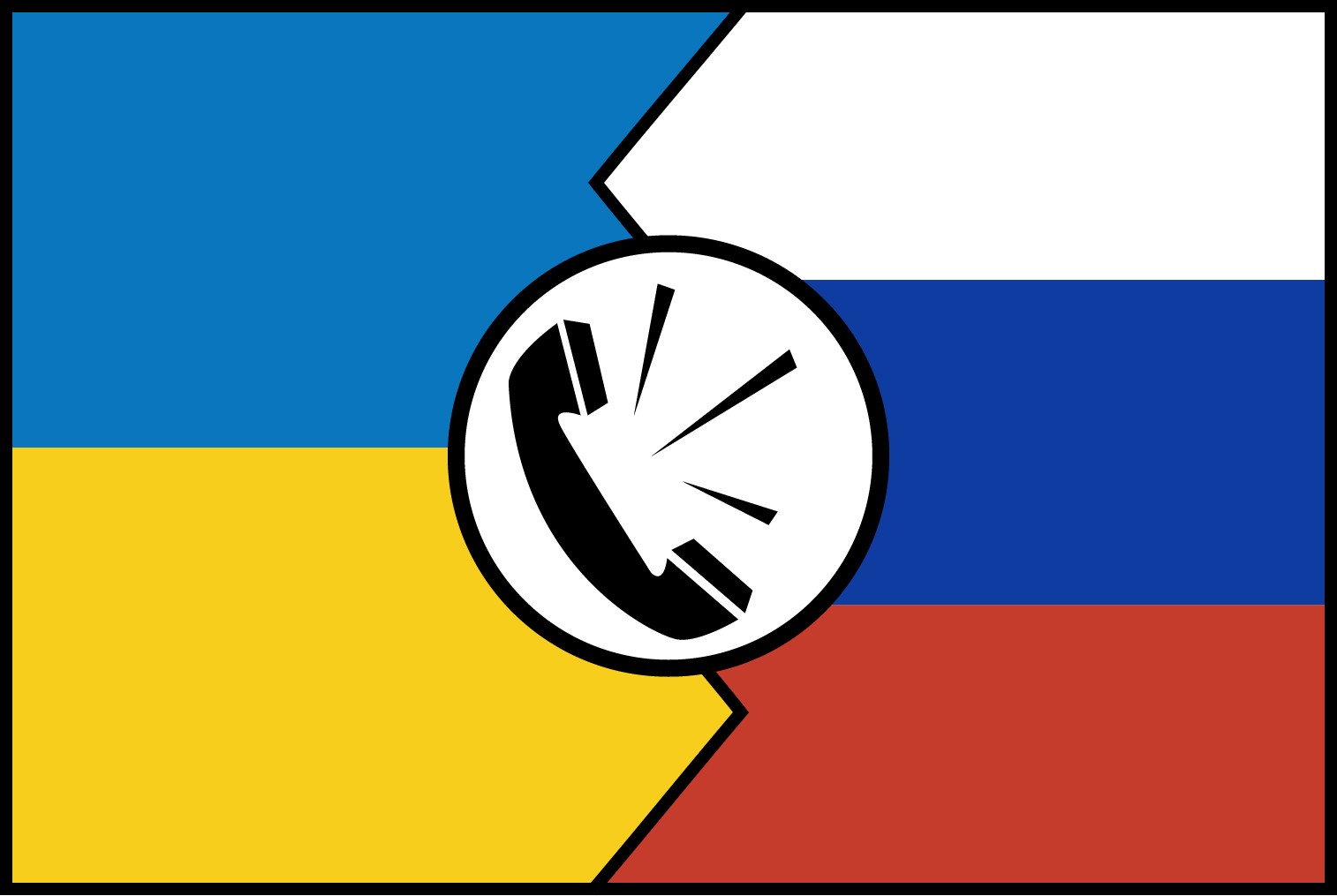
Russia/Ukraine | Graphic by Grace Merkle | The Wright State Guardian
The Russo-Ukrainian War is an ongoing conflict in eastern Europe that began in 2014 but escalated to an invasion on Feb. 24, 2022. Since then, the New Yorker has coined the war as the first “TikTok War,” due to the firsthand content flooding social media from Ukraine.
Along with firsthand content from the war, misinformation about the situation continues to circle social media as well.
Social media news
According to a recent review by Time Magazine, videos with the hashtag #Ukrainewar have over 600 million views on TikTok. On Instagram, the hashtag has over 180,000 posts as of March 7.
In a recent study, results show that on a weekly basis 89% of college students got their news from social media, while 93% got their news from discussions with peers.
Since the beginning of the Russo-Ukrainian War, Wright State University students expressed distress over the flood of war images and videos from Ukraine.
“It’s been upsetting having to watch millions of refugees have to leave their country,” Brayden Rhoades said. “There is a lot of biased media going around social media right now.”
Student Government Association President Jonathan Ciero warns his fellow students to not go searching for news that aligns with a specific opinion, as there will always be biased news.
“It is impossible to be perfectly non-biased, but there are plenty of sources that attempt to stay impartial. Be patient and wait for the news to come to you, and if you search for news on your own, also spend the time to fact-check what you find,” Ciero said.
Critical thinking
WSU political science professor Dr. Lee Hannah cautions students to think critically about distressing media they may be exposed to through social outlets.
“There is a hunger for instant information. We know enough about history to know that we don’t always have things right, right away. We have never had these devices that allow us to contribute to the conversation, and we have news outlets from social media that we didn’t have in the past that can lead us to believe or even share things that are not true. The biggest thing is just to be very slow to share. Do not contribute to the problem,” Hannah said.
In a recent interview with Time Magazine, trauma and media coverage researcher Professor Roxane Cohen Silver of the University of California spoke of the harmful effects of “doomscrolling” on mental health and increased stress levels.
“At traditional media outlets, editors decide which content is too graphic to show, and often label disturbing images with warnings. But people can take pictures and videos and immediately distribute that [on social media] without warning, potentially without thinking about it,” Cohen Silver said.
Doomscrolling
Merriam-Webster defines doomscrolling as, “[a] term referring to the tendency to continue to surf or scroll through bad news, even though that news is saddening, disheartening, or depressing.”
“I have been avoiding the graphic images of war on my social media for my mental health. But we should also all be paying attention to the other wars that have been going on this whole time, and are not getting as much media attention, like the Saudi invasion of Yemen,” WSU senior international relations major Ryan Diaz said.
WSU professor Dr. Valerie Shaelin warns students against the addictive nature of doomscrolling and unverified media. She is currently researching authenticating information in the presence of misinformation during crises through the National Science Foundation.
“[As a media consumer] you want to identify; where is it coming from? Where’s that link coming from? Is that a reliable source? Is that a source who should know? Find out what is actually going on,” Shaelin said.
Misinformation
WSU senior Earth and environmental sciences major Marissa Hicks said that she has been receiving news about the Russo-Ukrainian War from social media.
“I heard about the Ghost of Kyiv and the thirteen border soldiers on Snake island from social media,” Hicks said.
The Ghost of Kyiv was a name that flew into the limelight from social media. On Feb. 23, 2022, an inspirational video of a fighter pilot was uploaded to the official Ukrainian Twitter account.
The fighter was dubbed with the moniker “The Ghost of Kyiv” as the story circulated social media as a heroic morale booster. Users posted videos of fighter pilots engaged in combat and claimed the ghost had defeated five-plus Russian pilots.
The original footage used in the official video was recently fact-checked by multiple news outlets to be from the video game Digital Combat Simulator World. A recent tweet claimed that the Ghost of Kyiv had died, but Fact Crescendo found the accompanying image was from 2014.
“These types of stories lead people to rally and build this narrative, that all the good causes need martyrs. We still need to use discretion to get the facts right. It shows you how quickly stories can expand without the appropriate fact-checking, as Russia wages its disinformation campaign,” Hannah said.
The Thirteen soldiers of Snake island news leak began when a Ukrainian newspaper Pravada released a disturbing audio recording, where soldiers can be heard replying to a Russian submarine who demanded that they surrender their post. The soldiers deny the Russian’s request, and the audio cuts out, leaving the listener to infer that they were killed.
President Volodymyr Zelensky of Ukraine spoke of the deaths in a video, saying each border guard would be given the title Hero of Ukraine. However, the official Ukrainian Facebook account released a statement days later to confirm that the thirteen soldiers were still alive.
Mental Health
If a student’s mental health is being affected by the Russo-Ukrainian War they can call the Raider Cares line 24/7 at 937-775-4567 and Counseling and Wellness Services at 053 Student Union Monday through Friday, 8:30 a.m. to 5:00 p.m
